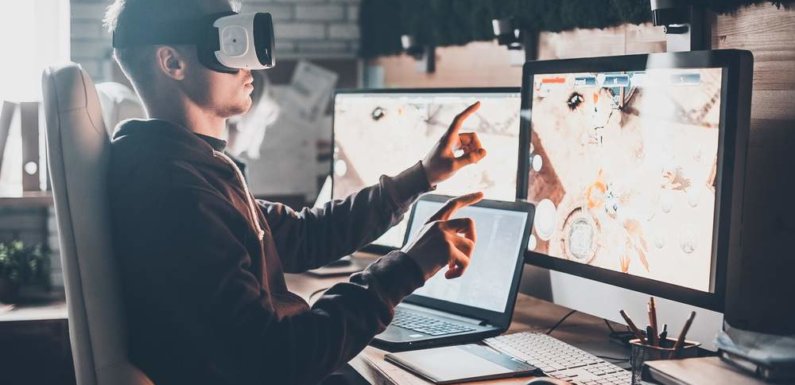
Virtual reality in general terms can be explained as a computer-simulated set-up/environment that is similar or completely different from the real world. VR has shown limitless potential to change the world in a short span of time. Whether that means influencing the way we create, communicate, learn, game and live our daily life. VR companies in India have started taking note of the potential of VR.
Today, the closest thing to reach out to people is through mobile phone, especially through android with approximately 300 million users. VR is not behind, it has already revolutionized the market and Pokemon GO is the best example of a VR android app. A majority of developers has already started shifting their focus on VR apps and create what is known as applications enhanced with VR technology. Perhaps the reason why there is a sudden increase in VR companies in India.
And what might come as a surprise, is just how easy it is to get started with your first Android VR app. So for developers and beginners how are looking for a way to get started with VR app development for Android. Here is how you can create your own VR app for android.
Choosing Your Development Tool
I know at this point your head might just explode from the ideas that are popping in your head. But before you actually start creating something, you need to choose your development environment and tools. I mean you can’t go out on a war without a sword.
When it comes to choosing the right development tools, there is a multitude of options, that can be used to create VR worlds. So here is the collection of tools that you can use to create native VR applications for Android.
Unity 3D
Unity at heart is actually a game engine. However, It has a direct VR mode to preview your work in a Head Mounted Display, which can really improve your work efficiency. Unity is by far one of the most popular tools being used today for VR development.
Unreal Engine (UE4)
One of the best competitors of unity is another gaming engine called the Unreal Engine. The effects and graphics are more advanced and realistic, but the learning curve is similar to Unity. It provides great performance with the benefit of a modern editing environment. But Unity is still slightly better when it comes to exporting to other platforms.
These are probably the best there is but 3DS Max & Maya, Blender, SketchUp and React VR are the few options that cannot be overlooked. Choice of the platform completely depends on you, but I personally suggest unity.
After you have selected your development tool you will also need to meet these software requirements:
• Android Studios
• Android SDK Nougat or higher.
• The latest Google VR SDK for Android.
After your development environment is ready, up and running. All you need to do is adjust a few settings such as
1. Targeting Android with your development environment
Most of the development tools, by default, are going to target a desktop solution. All you got do to is adjust a few build settings to make it target Android.
2. Adding to Your VR Project
We hope you have already thought of a name for your project. Yes, it is time to name your first project and start building your VR application for Android.
Well if you are an owner of a startup or an excited entrepreneur, then you need to think about this. To get the best for your business you must look for a VR Android app. If you feel it’s difficult then get touch with VR companies in India and get the job done.
Feeding our senses with a simulation that is so similar to what we see in reality, that we interpret it as reality. Well, when we here about virtual reality, it stills seem something we are only going to experience in the future. But as you might know, the future is already here and so is Virtual Reality.

